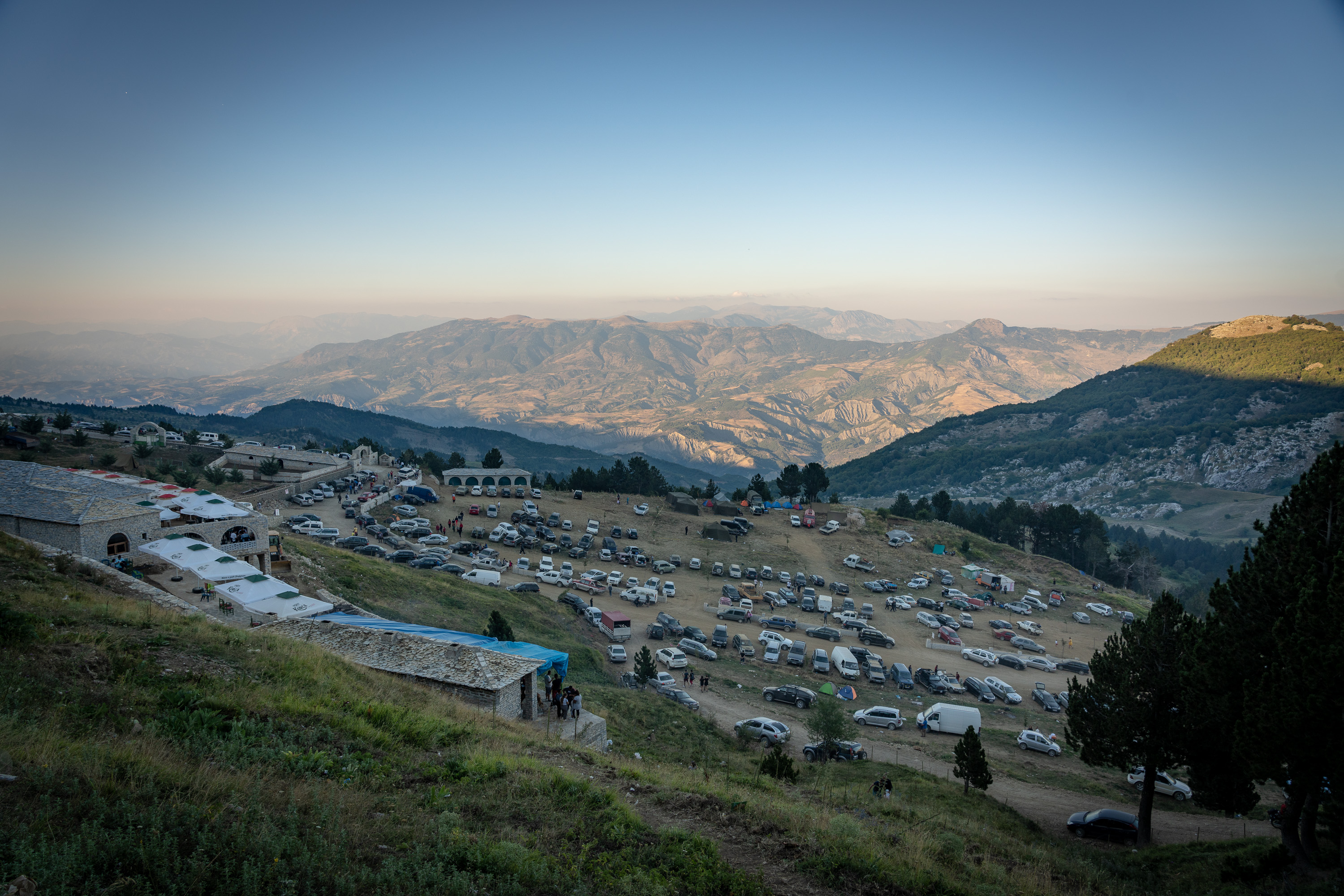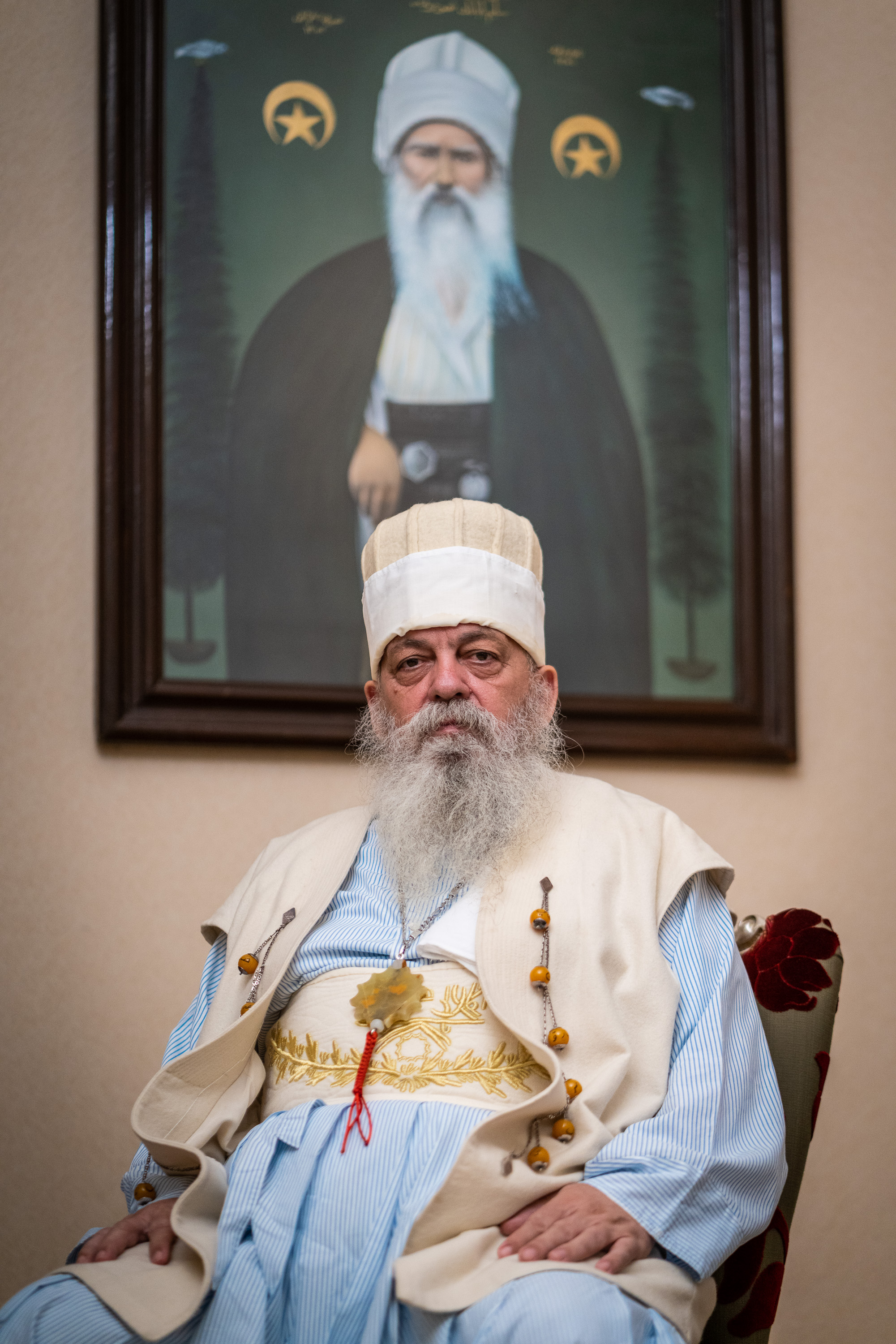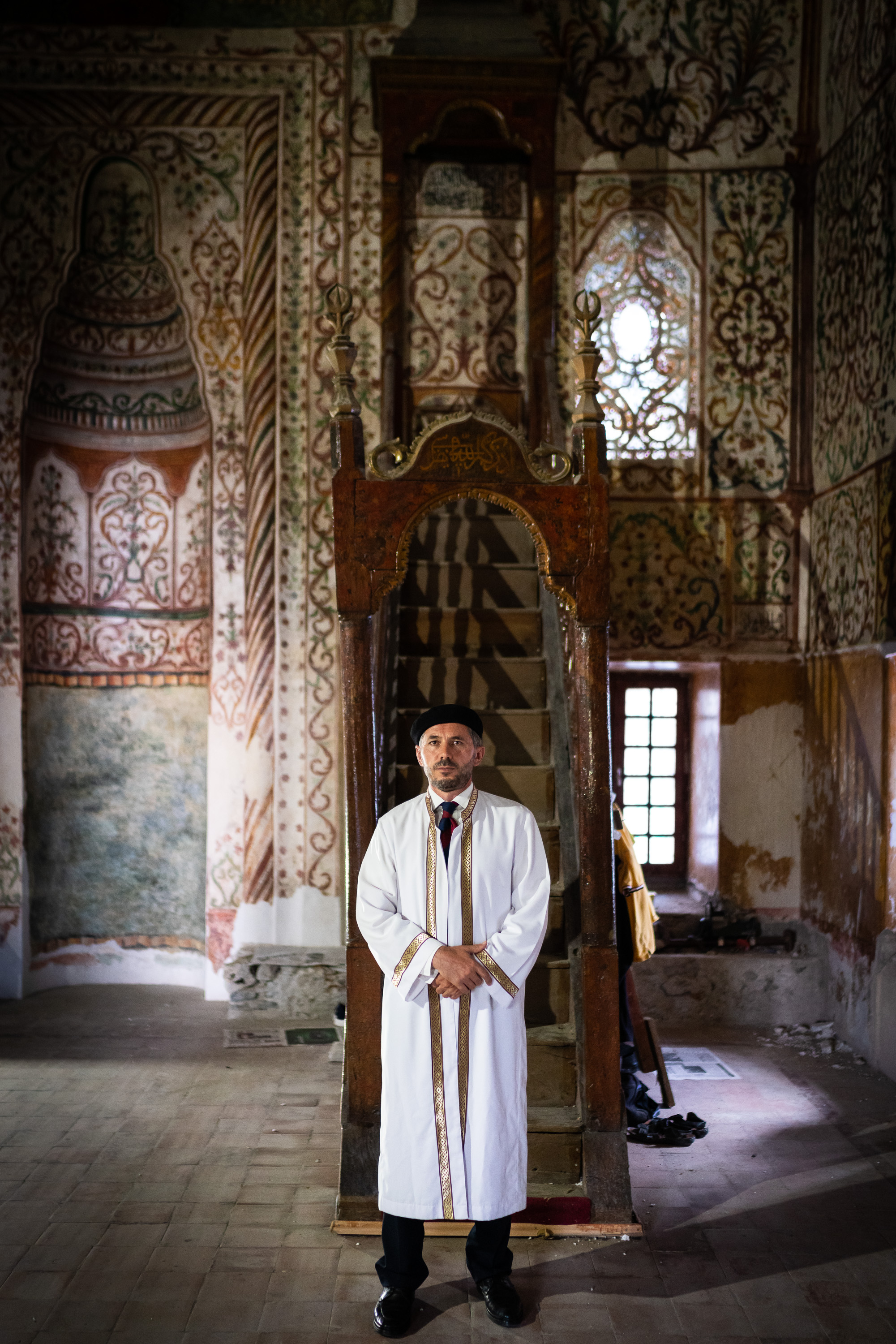Albania's Bektashi Muslims

The huge painting is hard to miss; thickly framed, it shows the Prophet Muhammad, his daughter Fatima and her husband, the Caliph Ali. For the guardians of the faith in Mecca and Tehran, this would be blasphemy, but Edmond Brahimaj thinks little of the ban on images in Islam. The spiritual leader of the Bektashi Muslims, whom everyone calls Baba Mondi, sits under the painting at the headquarters of the Sufi order in Tirana and says: "These are my parents; isn't it perfectly normal to hang up pictures of your own family?"
Tolerance is one of the guiding principles of the Shia Bektashi. Bektashi women do not wear headscarves and the congregation – men and women – prays together in the tekke, the house of worship.

Baba Mondi has important things to do on this evening in August: the five-day feast of pilgrimage is just kicking off.
Thousands of Albanians from all over the country are chugging up a bumpy, dusty track in their SUVs and old Mercedes, up Mount Tomorr in southern Albania. At the summit, the noise of engines mixes with loud music, while families picnic on the meadows and in front of tents where they will spend the night. The atmosphere is a mixture of local fete and open-air festival.
At the market stalls on the mountain, the sacred and the profane compete for attention: one table away from souvenirs – icons of Imam Hussein and the like – traders sell cans of beer and raki, a highly alcoholic drink.
Alcohol is sanctioned from the very top among the Shia Bektashi – in the reception hall at Baba Mondi in Tirana, two hip flasks belonging to former dervishes are displayed in a glass case.
Several dervishes are buried on Mount Tomorr. At their shrines, men in short trousers and women in even shorter trousers place photos of relatives, hopeful of a blessing. Later, each family chooses a sheep, the throat of which is then cut on the festival's own 'butchers row'.
The pilgrims dab a dot of the fresh blood on their foreheads for good luck; it has always been done that way, they say. The pilgrimage would seem to be based more on custom than deep religiosity.
"Allah or Jesus, it's all the same"
While a bloody fingerprint is also visible on Festim Shametaj's forehead, a distinctive gold cross hangs round his neck, a gift from his Christian sister-in-law. "Allah or Jesus, it's all the same," he says.
The heterodox Bektashi minority, similar to the Alevites in Turkey, suits Albania: they co-exist peacefully together with the Sunni majority, the Catholics and the Orthodox Christians.
Shared festivals and mixed marriages are widespread. In Albania, likely to become the first Muslim country within the EU, people who describe themselves as half-Muslim, half-Christian are common. In 2014, Pope Francis said the religious tolerance of the Balkan nation was an example to the world. The tolerant country is also the most secular: according to a Gallup poll, Albania has more people who describe religion as irrelevant to their everyday lives than any other Muslim-majority state.
This religious pragmatism was already evident in the later Middle Ages when Albania was a contested territory between West and East. If the West was victorious, the feudal lords adopted Catholicism; if the Byzantine Empire prevailed, they supported the Orthodox Church. In the 16th century, large parts of the population under Ottoman rule converted to Islam, some out of conviction, others under duress, or due to economic incentives.

The Bektashi played an important role in Islamisation: they were the spiritual companions of the janissaries, the elite troops of the Ottomans. How many people still call themselves Bektashi today is disputed. Baba Mondi claims the allegiance of half of Albania's nearly three million population. According to a recent census, the figure is more like 60,000. That said, one-fifth of respondents did not reveal their religious affiliation.
Religious repression under the Communists
In recent history, it was above all the communist dictator Enver Hoxha who shaped the country. In 1967, he declared Albania the world's first "atheist state" and had practicing believers arrested or executed.
Churches, mosques and the tekken of the Bektashi were expropriated or destroyed. Hoxha's anti-religious zeal was so great that even Stalin told him not to hurt the religious feelings of the people.
Fear of Hoxha's repression was part of the childhood of Ylli Gurra, Mufti of Tirana, who was born into a religious family in 1973. He remembers how the "sigurimi", the secret police, roamed around at night during Ramadan, checking on Muslims.
Once, when Gurra was still a schoolchild, they stormed into the house and arrested his grandfather. After three days of torture, they let him go. The shared experience of being oppressed brought the religions together, Gurra says.
After the collapse of the regime in 1990, the remaining believers tried to revive their communities. The Gulf states quickly brought money into the country, creating two to three hundred unofficial backyard mosques where imams with foreign training spread their ideologies. A struggle developed between them and the long-established over the interpretation of the religion.
The influence of Islamism was underestimated for a long time; many were surprised when, after the Arab Spring, over 140 Albanians went off to fight for Islamic State in Iraq or Syria. "We made mistakes," Ylli Gurra openly admits. The established religious communities had failed to supervise the unofficial mosques. In recent years, they have now regained control together with the state, he says. The mosques have either been registered or closed down and the imams officially hired.
"We have learnt our lesson," Gurra says, "we have to constantly work to uphold religious tolerance, it cannot be taken for granted."
In this he can count on the support of Baba Mondi and the Bektashi.
Karin A. Wenger and Philipp Breu (photos)
© Qantara.de 2022
